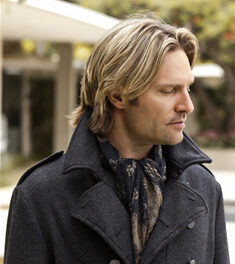Evening in the Country: Folk Influence in the Music of Bartók. Victoria Fischer, piano: Elon ImproVibes (©2002, 55:08). $15 in the Elon University shop, by mail at Campus Box 2075, Elon University, Elon, NC 27244, or via http://www.elonimprovibes.com/ [inactive 9/09].
This finely recorded CD is the product of a collaborative effort of the Elon Enterprise Academy and the Martha & Spencer Love School of Business at Elon University, where the artist is Professor of Music. Its production was planned, designed and executed entirely by students in the school’s entrepreneurship program, which owns the label. Four titles have been issued to date, this one being the first it completely produced from beginning to end, and it is a high quality production in every way (the misspelling of the pianist’s name in one place in the booklet being the only noticeable – and surprising! – error).
The recital itself is the fruit of the artist’s 15+ years of research into the subject that is its subtitle. The works are presented in chronological order, beginning with two short selections excerpted from two different collections of four short pieces each dating from 1904 and 1908. They serve as an introduction to the two major works, themselves collections of short pieces, the Fourteen Bagatelles, Op. 6 (1908), and Fifteen Hungarian Peasant Songs , (1914-18). The six-movement Petite Suite from 1936, which consists of transcriptions for piano from his 44 Duos for Two Violins of 1931, concludes the program. Outside complete transversals of Bartók’s piano works, the Op. 6 Bagatelles have not been very frequently recorded and several are on obscure labels. The Hungarian Peasant Songs have been a bit more frequently committed to disk, curiously once by Annie Fischer, and are more readily available.
The performance is outstanding, a true delight. Fischer’s touch is precise, crisp and clear and her interpretation is nicely nuanced. Listening to the piano itself contributes in no small measure to the listening pleasure: it is Elon’s 1923 Steinway D, restored (using David Stanwood’s PrecisionTouch Design hammer mechanism) by John Foy, and found on the stage of the university’s Whitley Auditorium, where the tracks were recorded. The notes by the artist in the attractive booklet reveal the depth and breadth of her scholarship without being pedantic and are as pleasant to read as the music is to hear. Fischer explains how Bartók rapidly perceived the limitations of restricting himself to authentic folk source material and began inventing melodies that appeared to have folk origins as early as the work, the second on the program, whose title is used for the CD. He also used authentic material in experimental ways, juxtaposing it with modernisms, as in the Bagatelles , and he intermingled the invented with the real McCoy as well. Sorting the latter all out must have represented quite a challenge for Fischer. In the last two works, the authentic melodies are used with invented accompanying material.
A fine addition to the library. Very highly recommended.












